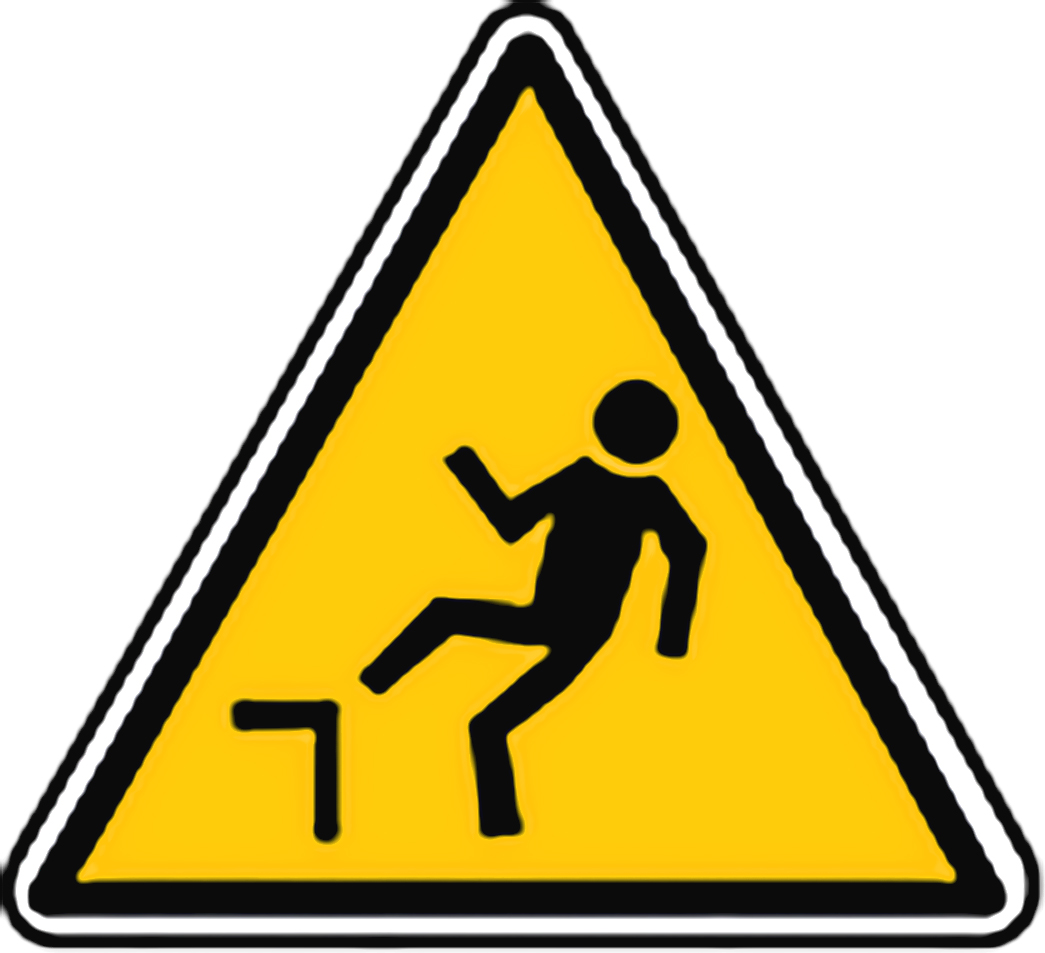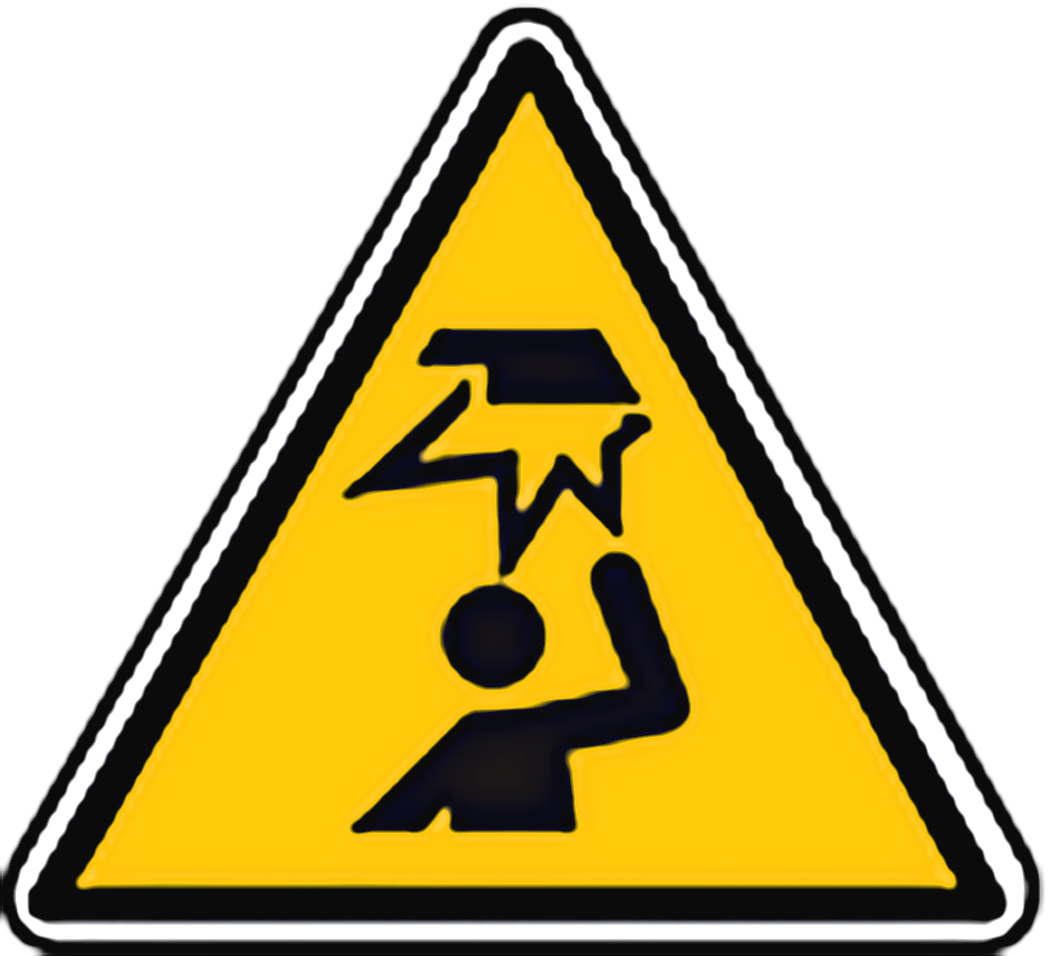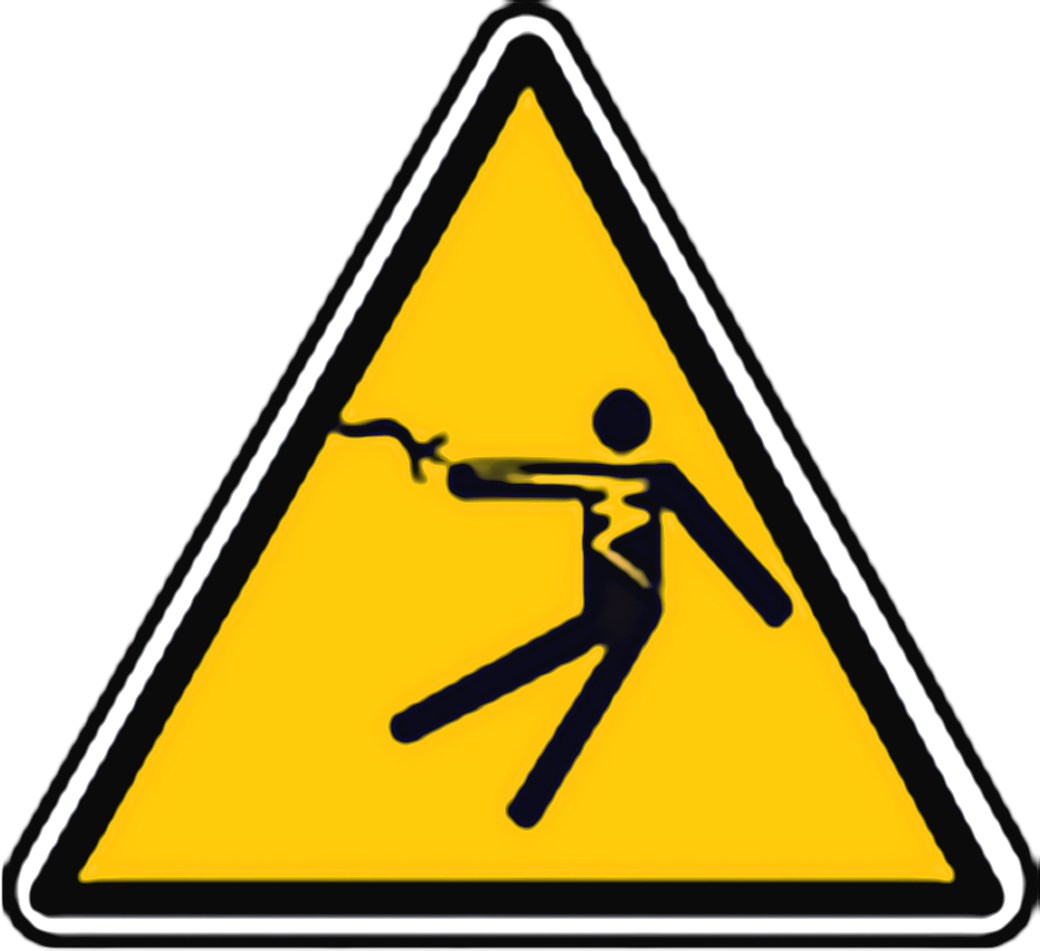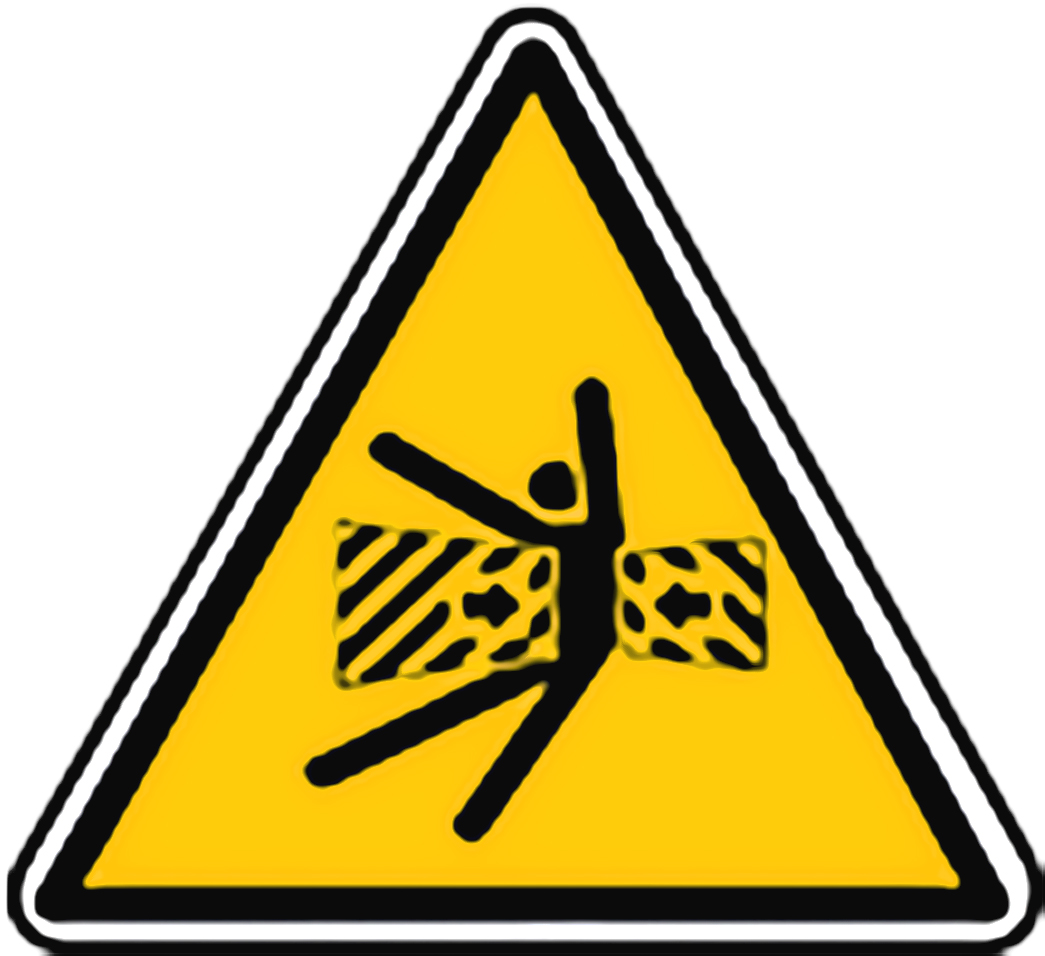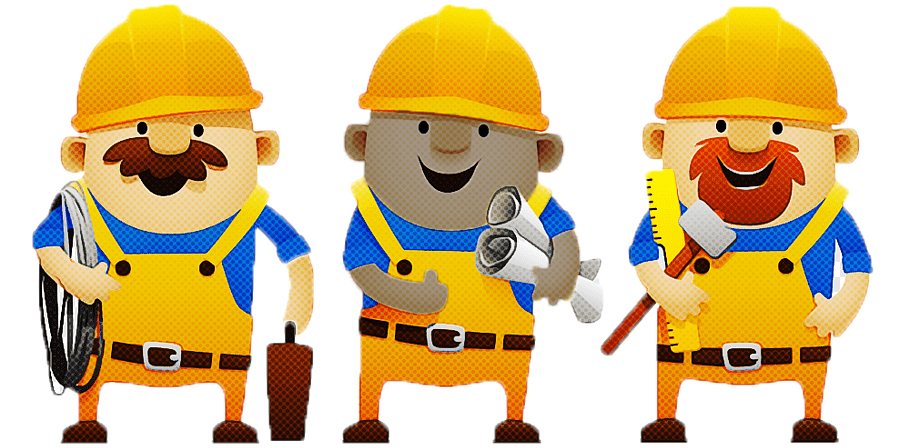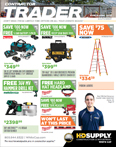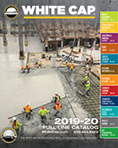Safety Is A Top Priority For Framers
Encouraging A Safe Frame Of Mind
Framers play a critical role in construction. Since they assemble the structure around and upon which a building is constructed, the need for safety is built into framing. In fact, one of the tenants of the National Framers Council (NFC) is to ensure all framers leave the jobsite each day in the same health as they arrived in the morning. Their motto is: ‘Work safely. Go home safely.’ For framers, everything is done with safety in mind.
The Fatal Four
Construction has the highest number of workplace fatalities; it can be a dangerous industry. According to OSHA, in 2018, one in five worker deaths were in construction. The Bureau of Labor Statistics has identified four primary causes of death that are responsible for over half of construction worker deaths. OSHA and NFC seek to raise awareness and advocate specific safety measures for each of the fatal four.
![]() Falls
Falls
Falls continue to have the dubious distinction of being the leading cause of workplace fatalities. Falls are the hazard framers face the most as they build from the ground up. Framers need to reinforce safety best practices and stand-down if necessary.
OSHA Safety Tip: Wear personal fall arrest equipment; install and maintain perimeter protection; cover, secure, and label floor openings; and use ladders and scaffolds safely.
![]() Being Struck
Being Struck
Framers work at all heights. They risk being struck by objects, such as tools or fixed objects breaking loose and falling from scaffolding above them. They can also be struck by equipment and vehicles when working at ground level.
OSHA Safety Tip: Never position oneself between moving and fixed objects and wear high-viz clothing.
Electrocution
Since framers are building from scratch, they often work around exposed wiring or portable tools and equipment. Electrocution can be a real threat.
OSHA Safety Tip: Locate utilities before starting work; ensure portable electric tools are grounded; and be alert to electrical hazards when working with ladders, scaffolds, and platforms.
![]() Being Caught In/Between
Being Caught In/Between
Anyone on a job site runs the risk of falling into a trench or excavation. OSHA Safety Tip: Never enter a trench or excavation without an adequate protective system and ensure trenches are protected by sloping, shoring, benching, or trench shield systems.
How to Keep Safe on the Job
Framers need a variety of safety measures in their toolbox. Some may be used regularly or as needed depending on the job at hand.
![]() Daily Huddle
Daily Huddle
The Daily Safety Huddle is a way for crews to quickly check in before work gets started and plan for any anticipated hazards. While COVID-19 is a primary topic discussed in safety meetings these days, so are discussing the workday ahead, determining whether the job is on track, and identifying potential hazards. Safety checks should also be conducted throughout the day to ensure the crew adheres to the safety guidelines. Starting each day with a safety huddle assures everyone is on the same page in terms of jobsite safety expectations and realities.
![]() PPE
PPE
Why do all construction workers dress alike? Because Personal Protective Equipment (PPE) make up the standard uniform on every jobsite. And while you probably cannot tell a fully outfitted framer apart from a pipefitter, head-to-toe PPE is designed to keep everyone on the job safe. From hard hats or safety helmets to construction boots, and everything in between, PPE is an essential part of the job. High-viz clothing includes shirts with retroreflective strips or high-viz vests and sweatshirts worn over regular t-shirts. Framers also regularly wear ear and eye protection as well as gloves. Construction managers encourage their crews to wear PPE by emphasizing a culture of safety on the job, sharing stories of the consequences of not wearing PPE, levying fines for those who don’t comply, or calculating what stopping work means to the whole crew in terms of time and money.
Safe + Sound
The importance of safety comes from the top and OSHA sponsors a year-round campaign to encourage and recognize safety in the workplace. The Safe + Sound Program raises awareness of workplace safety through resources, safety courses, communication, and a week of events. While safety is a top priority every day of the year, Safe + Sound culminates in a week of programs that emphasize workplace safety.
Aerial Lift Safety
When framers use Mobile Elevating Work Platforms (MEWPs), or aerial lifts, to access projects at height, there is an increased need for safe and effective use of this equipment. MEWP operators must comply with ANSI standards A92.20, A92.22, and A92.24 in the design, safe use, and training of aerial lifts. Framers need to be particularly aware of how to operate and work on MEWPs to conduct their framing activities.
FrameSAFE
The NFC has created a comprehensive jobsite safety program based on OSHA standards. FrameSAFE emphasizes safety training and awareness specifically for framers. It is a subscription-based program that comprises the following elements:
- Safety Manual – contains resources for framers to create their own safety plans
- Site-Specific Fall Protection Plan Template – allows for customization of safety plans
- Orientation Checklist – provides a safety overview for new employees on a jobsite
- Toolbox Talks – corresponds with the six topics of the Safety Manual and increases the safety information and training that framers need
- Safety Posters – graphically reinforces safety information for the jobsite
Framer Safety in Residential Construction
Falls are the leading cause of death for residential workers. Therefore, safety measures are particularly relevant to framers in residential construction. Residential construction comprises a structure that has an end-use as a home and must be constructed using traditional wood frame construction materials and methods. All residential construction employers must comply with OSHA 29 CFR 1926.501(b)(13) which includes provisions to safeguard framers working six feet above lower levels. Fall protection plans and measures for residential construction includes the implementation of guardrails, safety nets, and personal fall arrest systems.
Site-Specific Fall Protection Safety Plan
For framers that find it difficult to comply with OSHA 29 CFR Part 1926 Subpart M in certain circumstances, OSHA has added an appendix to the standard. Appendix E allows framers the ability to create a fall protection plan specific to the jobsite. While this site-specific plan can deviate from the standard, it must mitigate fall risks based on unique conditions and the specific fall hazards that exist onsite. The safety plan must be created by someone onsite capable of identifying existing and/or predicable fall hazards on that jobsite. NFC’s FrameSAFE site-specific fall protection plan template is an acceptable tool to use in creating this safety plan.
Safety Stand-Down
The best way for framers to put a spotlight on potential fall hazards and jobsite safety is to hold a Safety Stand-Down. These workplace events raise awareness about job hazards, protective methods, and individual company safety policies related to fall protection.
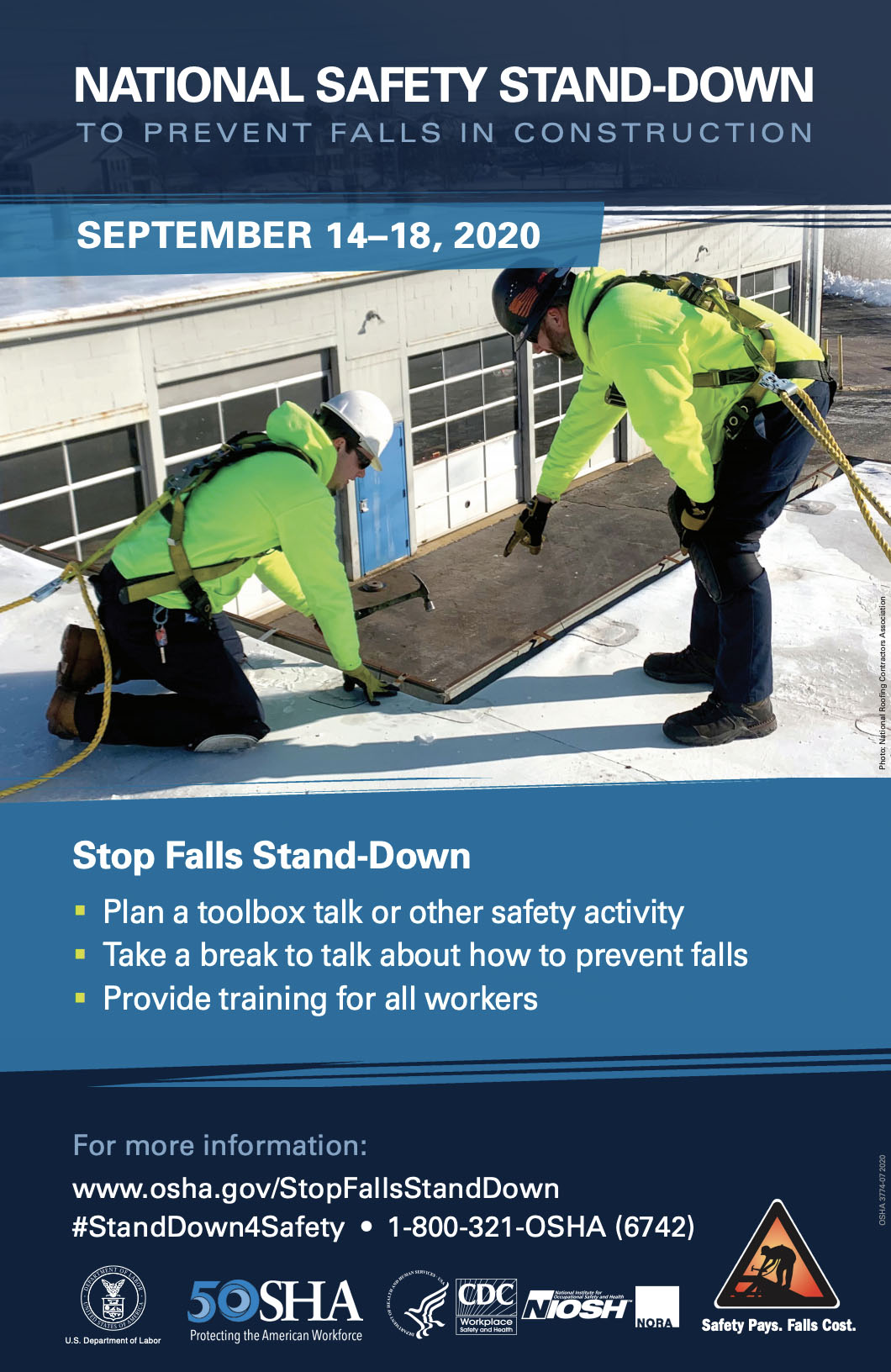
OSHA promotes Safety Stand-Downs by encouraging employers and employees to take a break from the workday and convene a toolbox talk or other safety activity. A Stand-Down could also comprise safety equipment inspections, identifying and developing rescue plans, offering enhanced safety training, or discussing the company’s safety policies.
This year’s National Safety Stand-Down to Prevent Falls in Construction happens September 14-18, 2020. OSHA leads this annual effort and partners with many safety-related entities to promote workplace fall prevention safety across the United States. Any workplace can participate and reinforce the importance of fall prevention. Companies that want to officially participate can visit OSHA’s website and connect with a Regional Stand-Down Coordinator, get suggestions on how to hold a successful Stand-Down, and receive a certificate of participation following the event.
![]()
Check out these links for more information on related topics:
Aerial Lift Safety Tips
https://news.whitecap.com/aerial-lift-safety/
SKILSAW Cordless Worm Drive
https://news.whitecap.com/skilsaw-worm-drive/
Ladder Safety Tips For Pros
https://news.whitecap.com/safety-stand-down-ladders/

